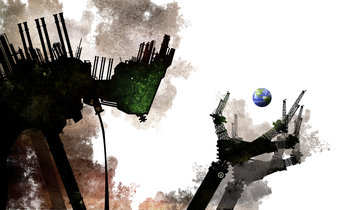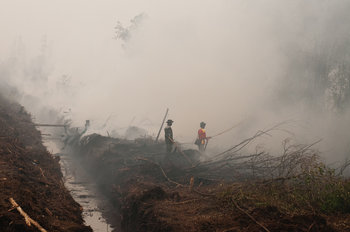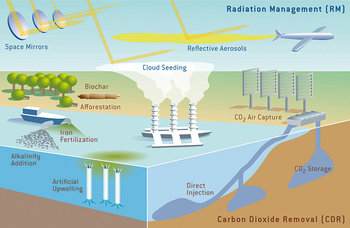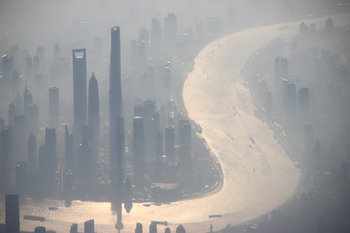
Fire Adaptations
Fire adaptations include survival mechanisms such as trees with thick bark, fire-resistant seeds and reserve shoots that pop out of the ground from roots structures immediately after a fire. Any plant or seed that survives a fire has a promising future as much of the competition has been eliminated. Eucalyptus contains flammable oils that encourage fires as they are particularly good at surviving in the aftermath.Small Fires vs Large Fires
Small fires create a diversity of growth in a forest. Areas with a recent fire will have small plants such as grasslands and shrublands that are an important habitat for a variety of species. Large fires do the opposite and create less diversity with vast regions of plants that are roughly the same age.Fire Suppression
Fire suppression potentially leads to larger wildfires by putting out fires so quickly that fuel builds up across vast areas of land. Eventually conditions become perfect for this fuel to burn and large scale fires occur. As such, it is increasingly common for controlled fires to be set as part of a fire management strategy. This can be designed mimic natural patterns of wildfire.Slash & Burn
Slash and burn agriculture is often portrayed as completely negative. However, properly managed slash & burn agriculture can theoretically simulate natural patterns of fire and regrowth. It is also possible for slash and burn to be used to capture carbon as biochar.In practice, it is rare for slash and burn agriculture to be properly managed resulting in a number of serious issues such as low air quality across vast regions.Global Warming
Forest fires release massive amounts of carbon dioxide into the atmosphere in a very short span of time. As part of the historical carbon cycle, this was compensated for by increased in the health of forests that would go on to absorb carbon. In the context of modern environmental problems, it is impossible to make a blanket statement that forest fires are natural and good. Excessive and damaging fires that make problems such as global warming worse are certainly possible. For example, large scale fires set by farmers in Indonesia represented an estimated 13% to 40% of all man-made carbon dioxide emissions in 1997.| Overview: Fire Ecology | ||
Type | ||
Definition | The role of fire in ecological systems. | |
Benefits | Many plants have adapted to fire and depend on a natural pace of wildfires.Small wildfires create important patches of diversity in a forest such as grasslands, shrublands and areas of small trees. | |
Issues | Air qualityGlobal warmingThreat to health, safety and property.Land and ecosystems may not recover properly from large forest fires due to factors such as soil erosion.Fire suppression can cause larger fires because fuel builds up until a large fire becomes inevitable.Controlled fires are often used to simulate natural fires and to prevent larger fires. | |
Related Concepts | ||






























